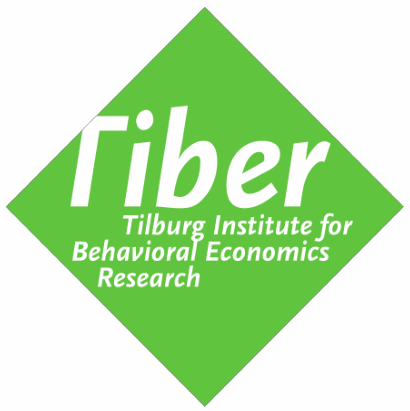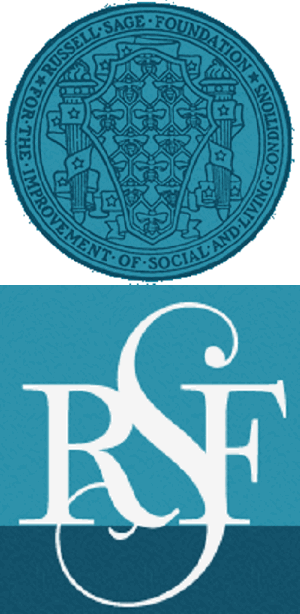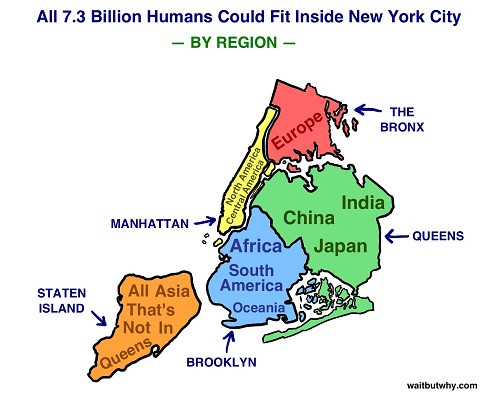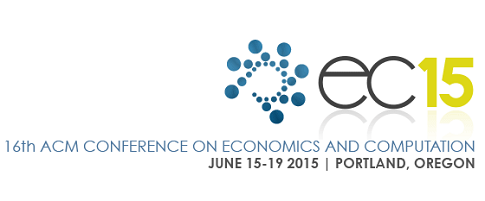THE BENEFITS OF FAMILIAR UNITS

This Mercator projection is famous for distorting land areas
Like Jake Hofman, we at Decision Science News love putting things in perspective. Watch this space for a paper we are writing on the topic. We recently thought:
- Wouldn’t it be cool for US readers to see how big foreign countries are by comparing them to presumably familiar US states?
- Wouldn’t it be cool for non-US readers to see how big US states are by comparing them to presumably familiar countries?
- Wouldn’t it be fun to group countries by area?
To keep things simple, we only consider the area of each state, twice the area of each state, and the area of the entire USA as units. We only bother with twice states’ area thing for big countries (larger than 2,500,000 sq km). For compactness, we do not provide the reverse mapping from countries to US states. R code available upon request.
Here you are. A list of US states along with countries and dependencies that are roughly as large as them:
Smaller than Rhode Island (4,002 sq km):
Andorra, Antigua and Barbuda, Bahrain, Barbados, Bermuda, Comoros, Cook Islands, Dominica, Gaza Strip, Grenada, Guadeloupe, Guam, Guernsey, Holy See (Vatican City), Hong Kong, Kiribati, Liechtenstein, Luxembourg, Macau, Maldives, Malta, Marshall Islands, Martinique, Mauritius, Micronesia (Federated States of), Monaco, Nauru, Palau, Saint Kitts and Nevis, Saint Lucia, Saint Vincent and the Grenadines, Samoa, San Marino, Seychelles, Singapore, São Tomé and Príncipe, Tonga, Tuvalu
As big as Rhode Island (4,002 sq km):
Cape Verde, French Polynesia
As big as Delaware (5,061 sq km):
Brunei, Cyprus, Puerto Rico, Trinidad and Tobago, West Bank
As big as Connecticut (14,359 sq km):
Bahamas, East Timor, Falkland Islands, Fiji, Gambia (The), Jamaica, Kuwait, Lebanon, Nagorno-Karabakh Republic, Qatar, Swaziland, Vanuatu
As big as New Jersey (22,590 sq km):
Belize, Djibouti, El Salvador, Israel, Slovenia
As big as Vermont (24,903 sq km):
Republic of Macedonia
As big as Massachusetts (27,337 sq km):
Haiti, Rwanda
As big as Hawaii (28,314 sq km):
Albania, Armenia, Burundi, Equatorial Guinea, Solomon Islands
As big as Maryland (32,134 sq km):
Belgium, Bhutan, Denmark, Estonia, Guinea-Bissau, Lesotho, Moldova, Netherlands, Republic of China (Taiwan), Switzerland
As big as West Virginia (62,758 sq km):
Bosnia and Herzegovina, Costa Rica, Croatia, Dominican Republic, Georgia, Ireland, Latvia, Lithuania, Sierra Leone, Slovakia, Sri Lanka, Togo
As big as South Carolina (82,898 sq km):
Austria, Azerbaijan, Czech Republic, Panama, United Arab Emirates
As big as Maine (91,652 sq km):
French Guiana, Jordan, Portugal
As big as Indiana (94,327 sq km):
Hungary, South Korea
As big as Kentucky (104,664 sq km):
Iceland, Serbia and Montenegro
As big as Tennessee (109,158 sq km):
Guatemala
As big as Virginia (110,771 sq km):
Benin, Bulgaria, Cuba, Honduras, Liberia
As big as Pennsylvania (119,290 sq km):
Eritrea, Malawi, North Korea
As big as Mississippi (125,443 sq km):
Nicaragua
As big as Louisiana (134,273 sq km):
Greece
As big as New York (141,090 sq km):
Nepal, Tajikistan
As big as Iowa (145,754 sq km):
Bangladesh
As big as Wisconsin (169,652 sq km):
Suriname, Tunisia
As big as Missouri (180,545 sq km):
Uruguay
As big as Oklahoma (181,048 sq km):
Cambodia
As big as Washington (184,674 sq km):
Syria
As big as South Dakota (199,742 sq km):
Kyrgyzstan, Senegal
As big as Kansas (213,109 sq km):
Belarus
As big as Idaho (216,456 sq km):
Guyana
As big as Minnesota (225,181 sq km):
Laos, Romania, Uganda
As big as Michigan (250,737 sq km):
Ghana, Guinea, United Kingdom
As big as Colorado (269,618 sq km):
Burkina Faso, Gabon, New Zealand, Western Sahara
As big as Nevada (286,367 sq km):
Ecuador
As big as Arizona (295,274 sq km):
Italy, Philippines
As big as New Mexico (314,924 sq km):
Congo (Republic of the), Côte d’Ivoire, Finland, Malaysia, Norway, Oman, Poland, Vietnam
As big as Montana (380,847 sq km):
Germany, Japan, Zimbabwe
As big as California (423,999 sq km):
Cameroon, France, Iraq, Morocco, Papua New Guinea, Paraguay, Spain, Sweden, Thailand, Turkmenistan, Uzbekistan, Yemen
As big as Texas (695,673 sq km):
Afghanistan, Bolivia, Botswana, Central African Republic, Chile, Colombia, Egypt, Ethiopia, Kenya, Madagascar, Mauritania, Mozambique, Myanmar, Namibia, Nigeria, Pakistan, Somalia, Tanzania, Turkey, Ukraine, Venezuela, Zambia
As big as Alaska (1,700,133 sq km):
Algeria, Angola, Chad, Congo (Democratic Republic of the), Greenland, Indonesia, Iran, Libya, Mali, Mexico, Mongolia, Niger, Peru, Saudi Arabia, South Africa, Sudan
Twice as big as Alaska (3,400,266 sq km):
Argentina, India, Kazakhstan
As big as the United States (9,826,630 sq km):
Australia, Brazil, Canada, China
Twice as big as the United States (19,653,260 sq km):
Russia
Map credit:http://en.wikipedia.org/wiki/List_of_map_projections#mediaviewer/File:Miller_projection_SW.jpg
Country Areas: http://simple.wikipedia.org/wiki/List_of_countries_by_area
 Subscribe to Decision Science News by Email (one email per week, easy unsubscribe)
Subscribe to Decision Science News by Email (one email per week, easy unsubscribe)












